This step by step diy project is about potting bench with sink plans. If you like sp[ending time in your garden, a wooden potting bench with a sink will ease your work. Style is also important, so this project features a potting bench with a neat design that can turn your project in a veritable focus point of your garden. Don’t forget to take a look over the rest of the outdoor projects and to adjust the design and size of the bench to suit your needs.
You should always plan everything from the very beginning and to adjust the size of the potting bench to your needs, while you can still use the woodworking techniques described in this project. Taking into account the simple design, this garden work bench can match the style of any backyard. Mark the cut lines on the slats before making the cuts and use a jigsaw to get the job done.
There are a few tips that you should take into account, if you want to get a professional result. Therefore, take accurate measurements and use professional tool when making the cuts or when drilling pilot holes. Align the components at both ends and add waterproof glue to the joints, if you want to create a rigid structure. Round the exposed edges with sandpaper or by using a good router. See all my Premium Plans in the Shop.
Made from this plan
Potting bench with sink plans
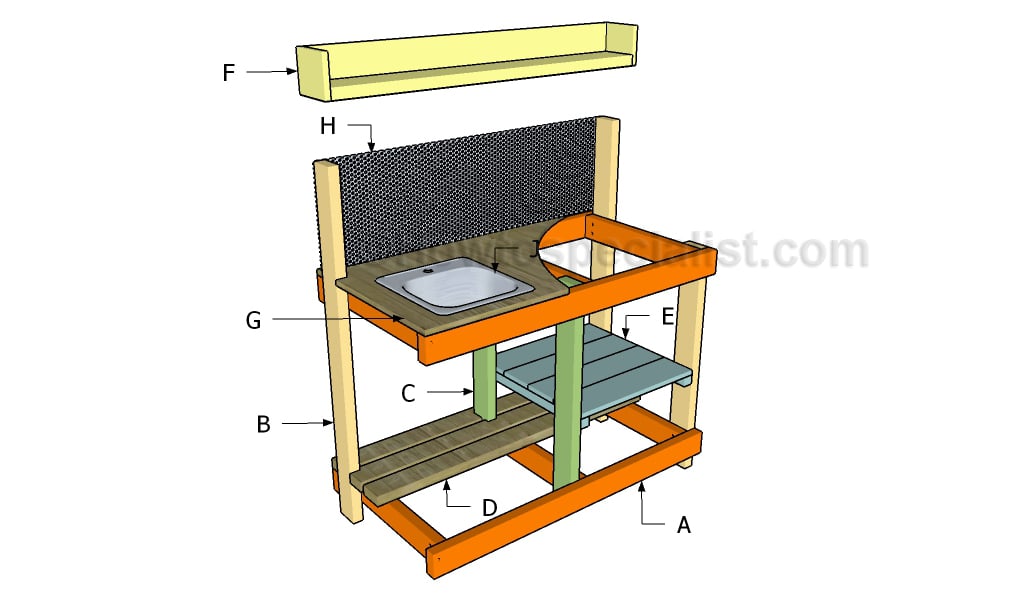
Building a potting bench
Materials
- A – 2 pieces of 2×4 lumber – 22″ long, 3 pieces – 48″ long 2xFRAMES
- B – 2 pieces of 2×4 lumber – 35″ long, 2 pieces – 60″ long LEGS
- C – 2 pieces of 2×4 lumber – 32″ long SUPPORTS
- D – 6 pieces of 2×4 lumber – 48″ long SHELF
- E – 4 piece of 2×2 lumber – 22″ long, 8 pieces of 1×4 lumber – 21 3/4″ long SHELVES
- F – 1 piece of 2×6 lumber – 48″ long, 1 piece of 1×6 lumber – 48″ long, 2 pieces- 6 1/4″ long TOP SHELF
- G – 1 piece of 3/4″ plywood – 25″x48 long COUNTERTOP
- H – 1 piece of perforated metal sheet – 23 1/2″x48″” long, 1 piece – 14 1/4″x48″ long PANELS
- 11 pieces of 2×4 lumber – 8”
- 1 piece of 2×2 lumber – 8′
- 2 pieces of 1×4 lumber – 8′
- 1 piece of 2×4 lumber – 4′
- 1 piece of 1×6 lumber – 6′
- 1 piece of 3/4″ plywood – 4’x8′
- perforated metal sheet – 4’x4′
Tools
- Safety gloves, glasses, Miter saw, jigsaw
- Chalk line, tape measure, spirit level, carpentry pencil
- Drill machinery and drill bits
Tips
- Use a good miter saw to make the angle cuts
- Drill pilot holes before inserting the screws
Time
- One Week
Related
How to build a potting bench
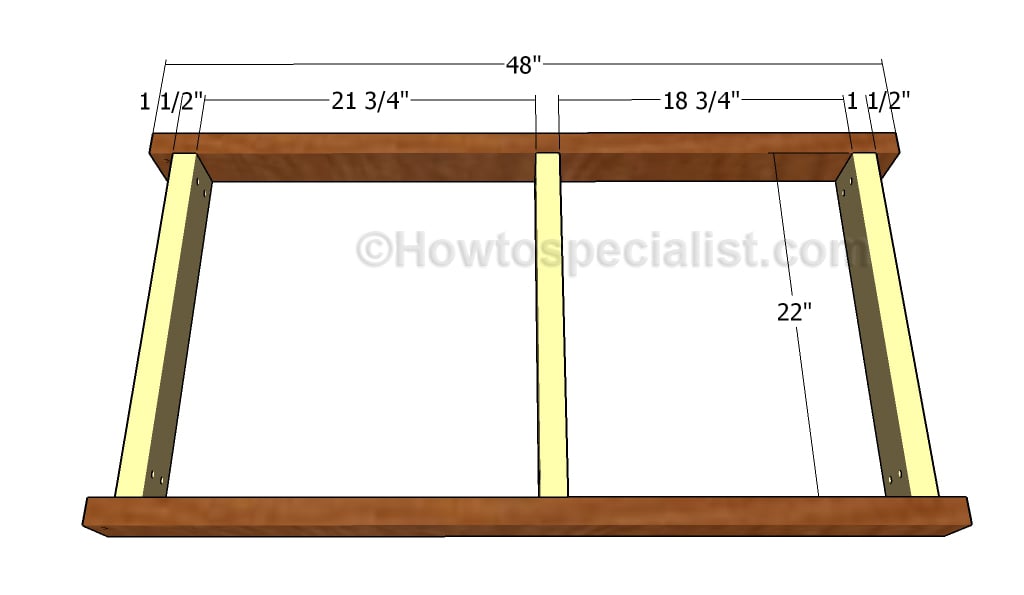
Building the frames
The first step of the woodworking project is to build the frames for the potting bench. Cut the components at the right size and drill pocket holes at both ends of the short components. Insert 2 1/2″ screws through the components into the perpendicular components. Make sure the corners are right-angled and leave no gaps between the components.
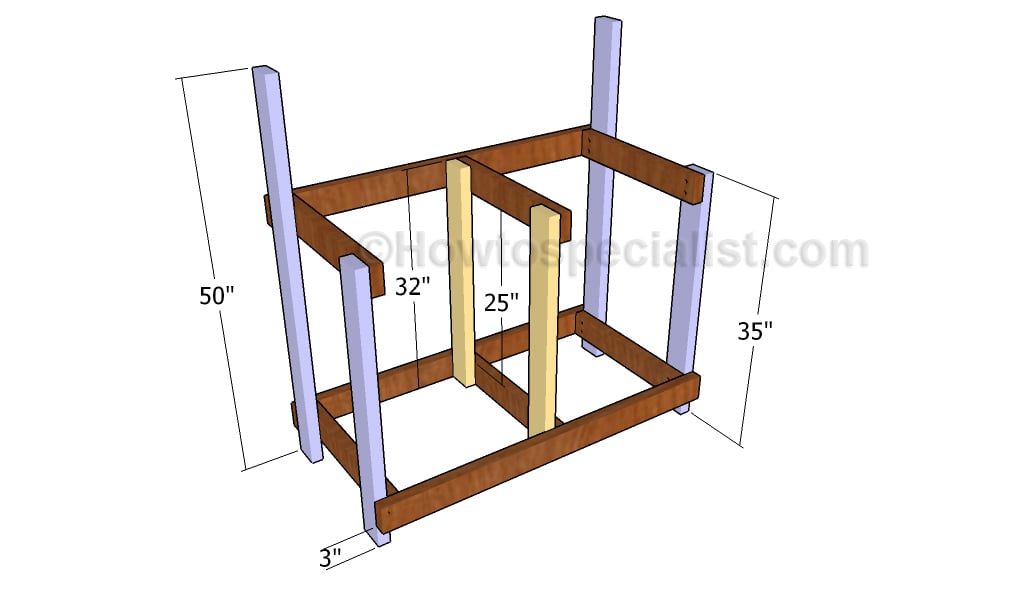
Building the frame of the potting bench
Next, you need to fit the 2×4 legs to the frames, as described in the diagram. Drill pilot holes through the legs and insert 2 1/2″ screws into the frames. Make sure the legs are plumb and check if the frames are perfectly horizontal, by using a spirit level. Leave no gaps between the components for a professional result.
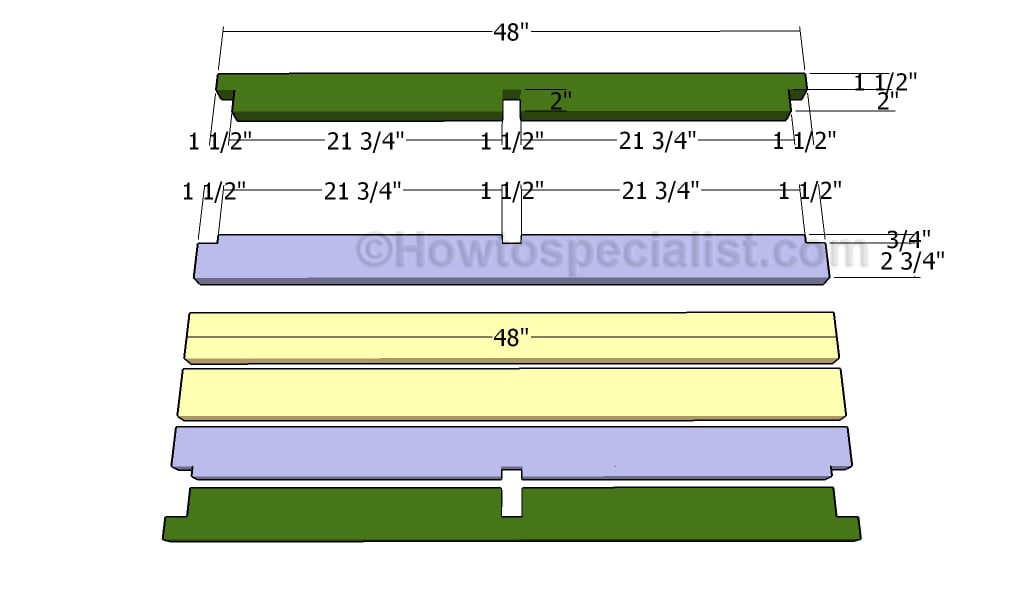
Building the bottom shelf slats
Continue the project by cutting the 2×4 slats that will make the bottom shelf. In order to get a professional result, we recommend you to make the notches to the slats, as to fit into place properly. Use a circular saw to make parallel cuts inside the marked areas.
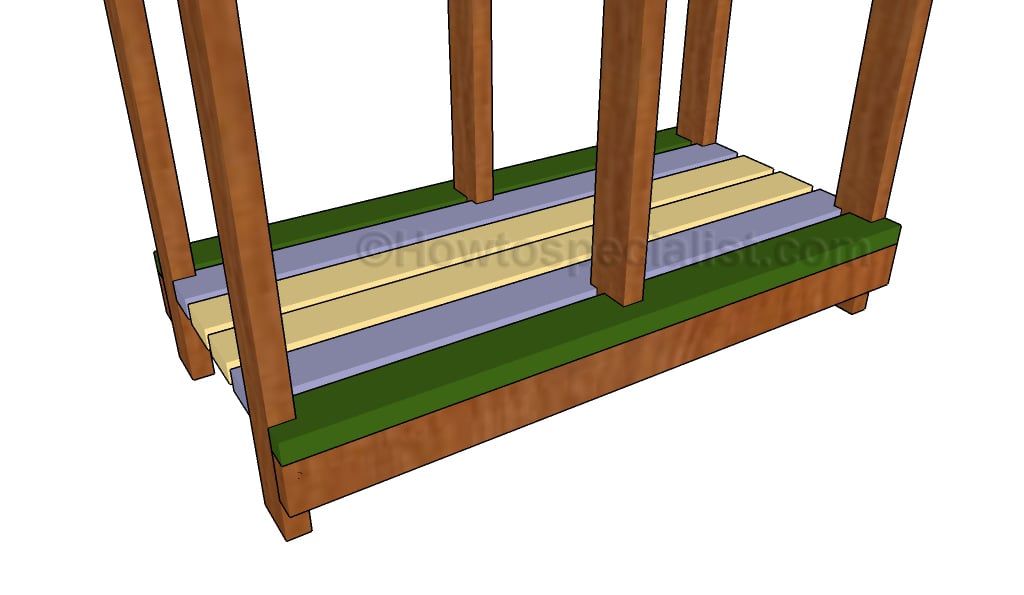
Building the bottom shelf
Fit the slats to the bottom shelf and lock them into place using 2 1/2″ screws. Place the slats equally-spaced and drill pilot holes before inserting the screws, to prevent the wood from splitting.
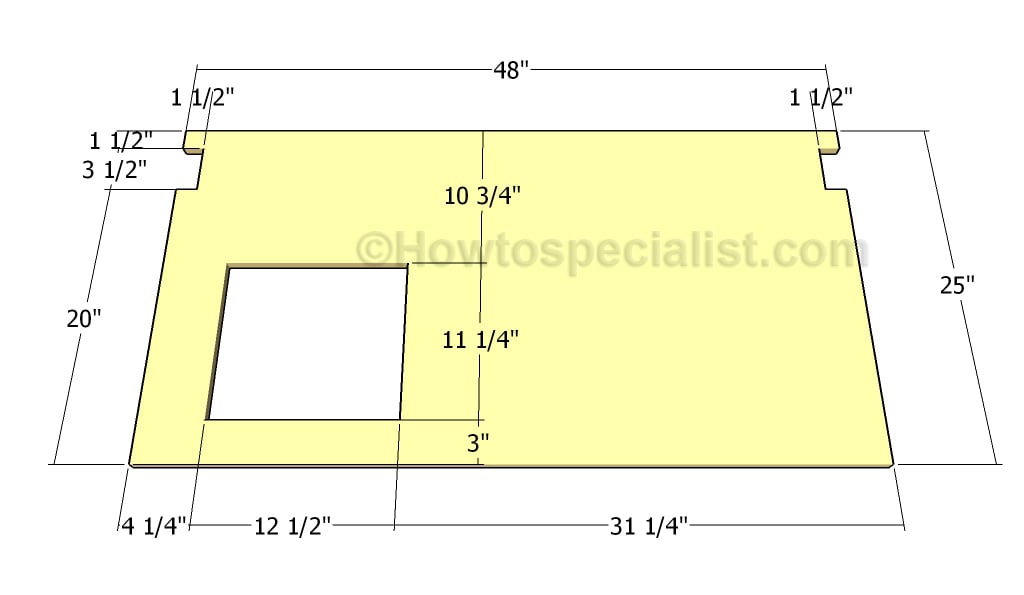
Building the tabletop
Build the countertop out of 3/4″ plywood. Make the cuts with a circular saw and smooth the edges with fine grit sandpaper. Drill a starting holes and make the sink opening using a jigsaw.
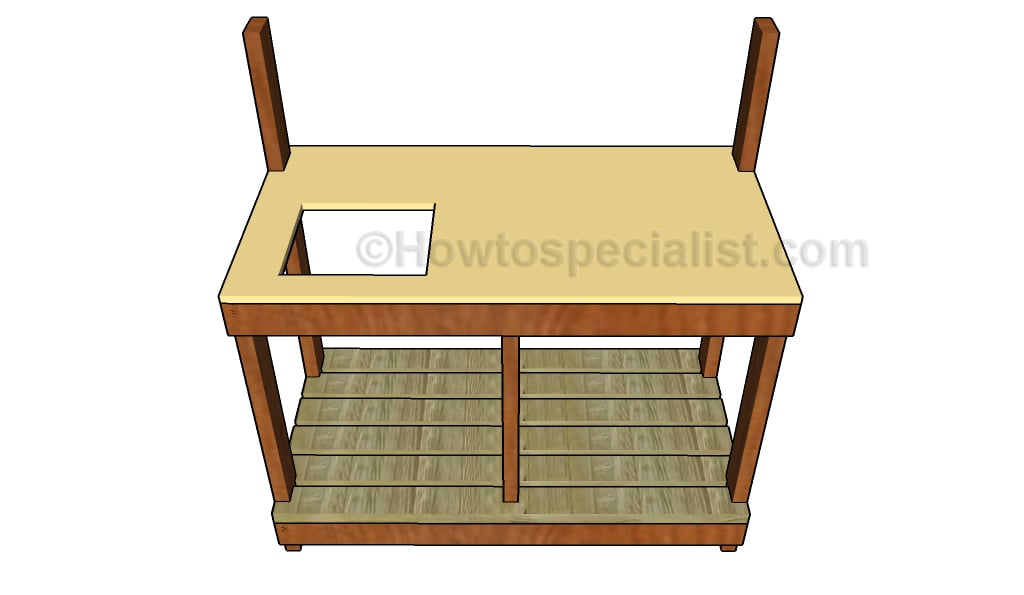
Attaching the tabletop
Fit the tabletop to the potting bench, as shown in the diagram. Drill pilot holes through the plywood component and lock it into place using 1 1/4″ screws. Leave no gaps between the components. Add glue to enhance the bond of the components.
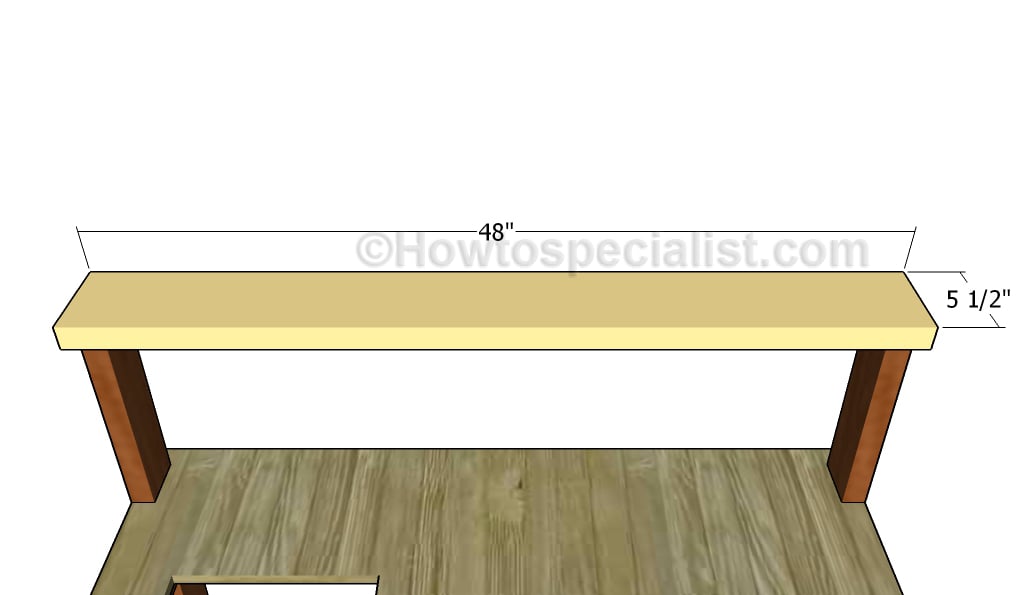
Top Shelf
In order to enhance the storage space, we strongly recommend you to build a top shelf to the back legs of the potting bench. Therefore, fit the 2×6 bottom to the top of the legs and lock it into place with 2 1/2″ screws. Pre-drill the slat to prevent the wood from splitting.
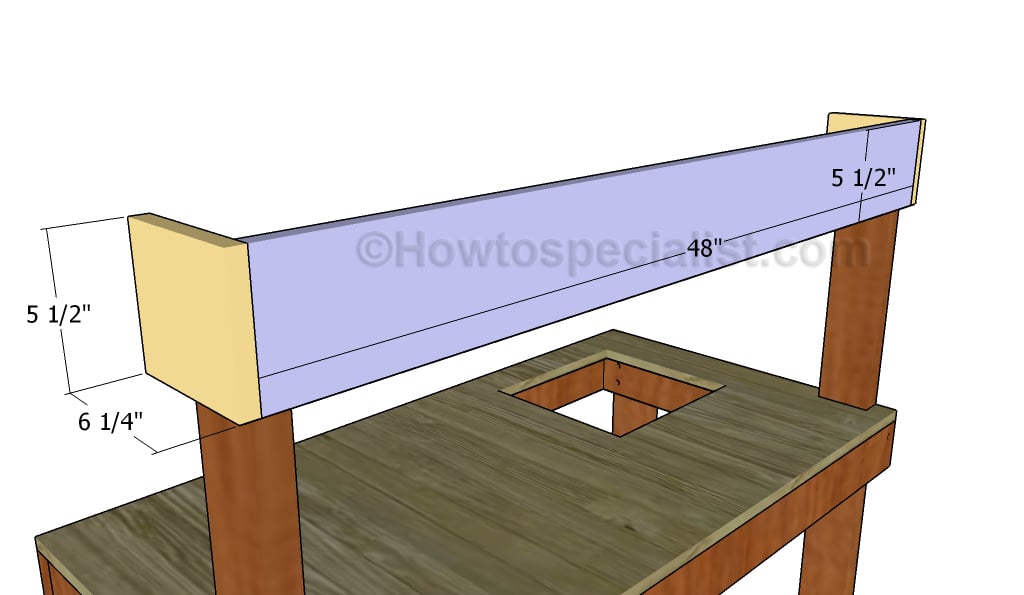
Building the top shelf
Fit the 1×6 slats to the back and to the sides of the bottom component, using the information from the diagram. Leave no gaps between the components and lock them together tightly using 1 1/4″ screws and glue.
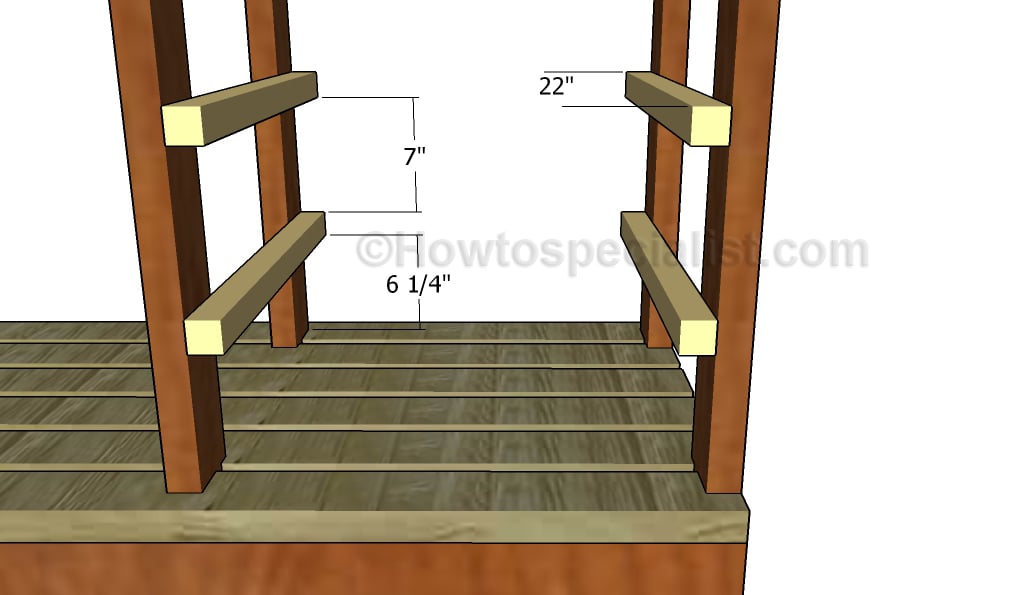
Fitting the cleats
In addition, you could create two storage shelves to the bottom of the potting bench. Start by fitting the 2×2 cleats to the legs of the potting bench. As you can easily notice in the diagram, we recommend you to drill pilot holes before inserting the 2 1/2″ screws into the legs.
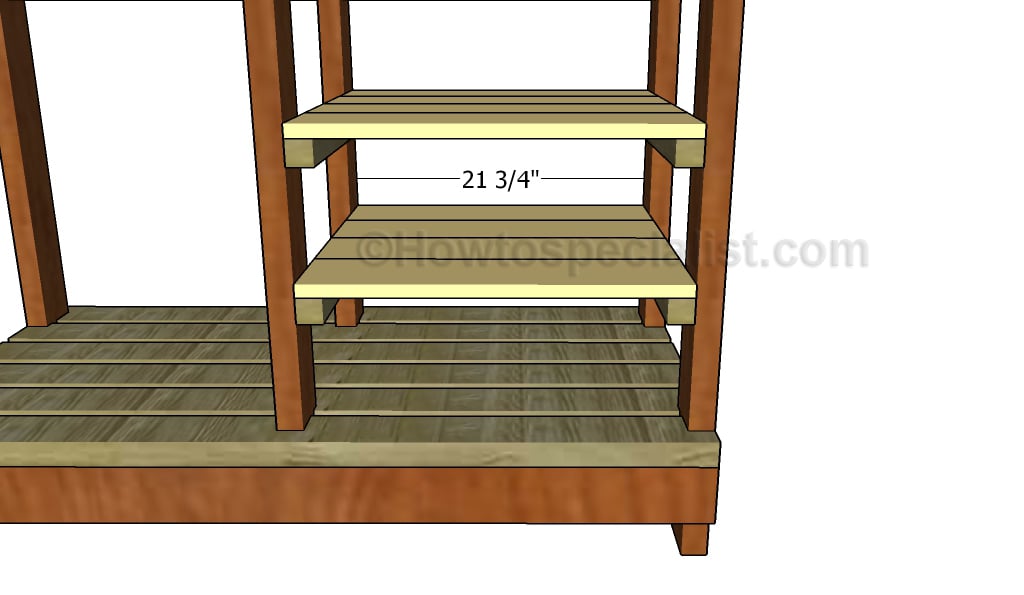
Fitting the slats to the small shelves
Next, attach the 1×4 slats to the cleats, in order to build the shelves. Dill pilot holes through the slats before inserting the 1 1/4″ screws, to prevent the wood from splitting.
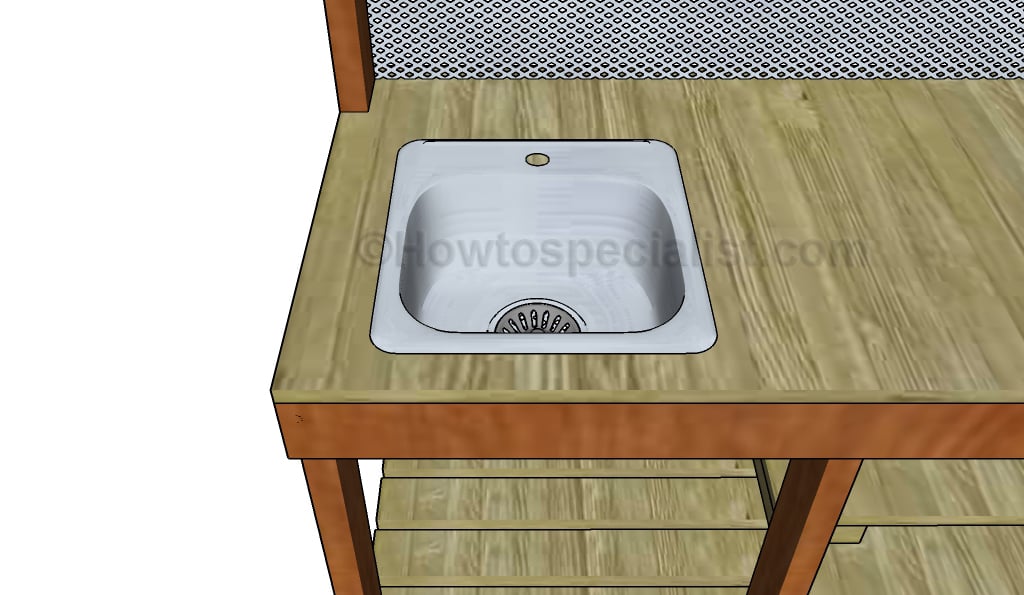
Fitting the sink to the bench
Fit the sink to the opening and use silicone to seal the joints. Make sure you cut out a hole in the countertop to fit the tap.
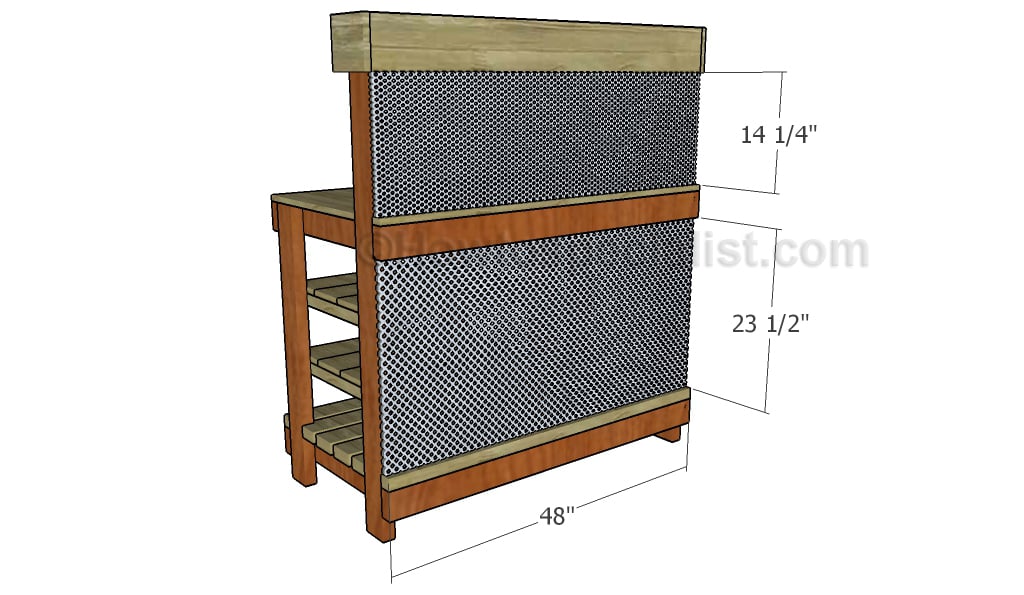
Fitting the panels to the back
If you want to add character to the potting bench, you should fit perforated metal panels to the back of the potting bench. Cut the sheets at the right size and secure them into place using screws. Leave no gaps between the components and align the edges with great care.
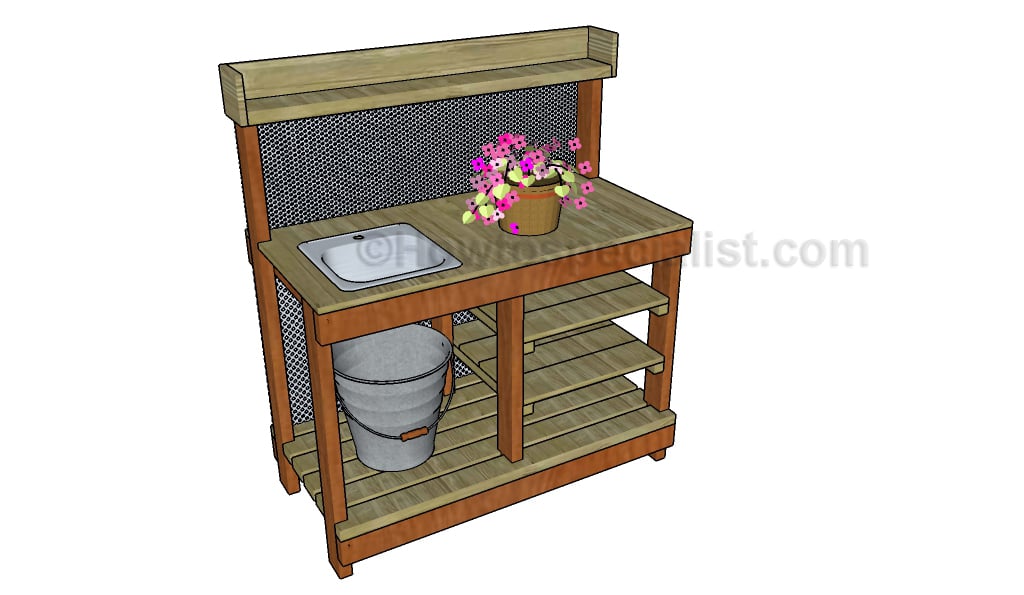
Potting bench with sink plans
Last but not least, we recommend you to take care of the finishing touches. In order to get a professional result, fill the holes and the gaps with wood filler and let it dry out for a few hours. Check if there are protruding screws and fix this issue, if necessary.
Thank you for reading our project about potting bench with sink plans and we recommend you to check out the rest of the projects. Don’t forget to SHARE and LIKE our projects with your friends, by using the social media widgets, if you want to help us keep adding free woodworking plans.

2 comments
Beautifully illustrated plans. I’m curious about why you are using 2×4 materials for the bottom shelf, rather than thinner boards or plywood.
I’d also encourage you to have a shopping list (how many 8′ 2×4’s will I need?) I will calculate it out, but when you are showing this level of clarity and using colors to make things easy to understand, that one add would also be helpful.
I used the 2x4s for strength. If you are not going to store heavy items on the shelf, you could easily go for 1x4s. Thank you for the feedback, I will add the materials list, as well!
Comments are closed.